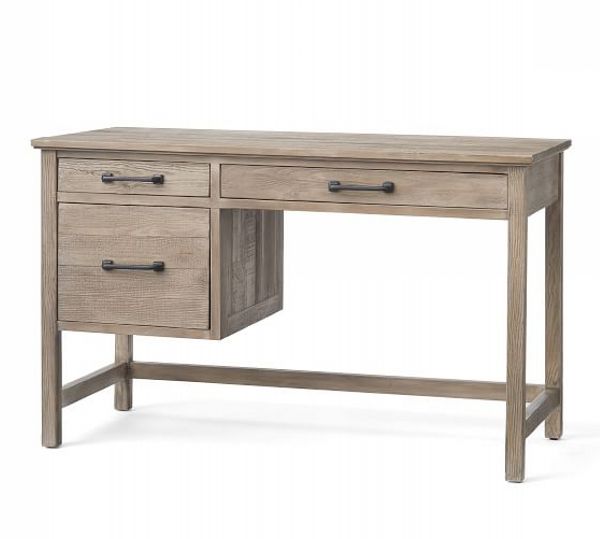Simple Desk Plans - Steps For Crafting Framework
We also installed oval closet rods with brackets that you insert into the cabinets' shelf-pin holes, which makes for super-easy height adjustments. The cutting list shows you how many of each part you'll need. Cut and clamp a block to the side of your rip fence and then position the fence the correct distance from blade. The test board shows the effects of different amounts of sealer. The beauty of this projects is that it's basically a table with a fire pit in middle. Use the wire wheel on the edges and ends of board to create an uneven, worn look.
We applied the same edging to plywood shelves. If you don't have a router, you can do the job with a block plane, a sanding block or a random orbit (page) sander. So lumber with a finish on only one side will end up with differing moisture levels in the finished and unfinished sides. With the cardboard template, mark table's shape and rip curves with a band saw. Install no-mortise hinges on stiles and the door edges before installing face frames in bookcase. Any imperfections in caulk will show up on the tabletop. Nail it to each rafter and keep the courses running straight.
If you sand a lot of thin timber on your drum sander, you'll wear out only bottom part of drums. Then attach 42 inch vertical lengths every 32 inches for support. Nail boards on sides first, then install boards on back and front walls, overlapping side boards. If you saw hole until the pilot bit just breaks through wood, then flip the board over and saw from the other side, the plug will practically fall out on its own. The size of entry hole and size of interior room can make a huge difference in the type of bird your house would attract.
Here's a fun little project to keep your screws, nails, nuts and electrical whatsits handy and neatly organized. Glue and nail boards to the frames and then sand the edges flush. So if you can, belt-sand board before cutting it to final length. Let silicone cure overnight before mounting doors. Minutes wasted cutting the wire mesh or searching for a tool could ruin project. The key to successfully driving screws at an angle is to use this two-step process to create an angled pilot hole. You will use this circular saw jig over and over again. The plan was to randomly shovel in portions from each mixture to create a marbling effect.
Then you'll have it for any other interior leveling tasks. Clamp like boards together to get same arcs. Set the sides upright on a large worktable or flat area of the floor, then nail the top, bottom and center fixed shelves to nailers. The sealer keeps grout from hazing the stone surface. For an even bead that's perfectly centered on the edge, hold the glue bottle with one hand and spout with other hand. After glue is dry, trim timber plugs flush with the top. When it comes to building blocks of an old house, you know what you're in for as these homes were built to last.
This frees the blade to continue and effectively reduces each contour to a series of short, manageable cuts. Usually, a brush is best tool for applying polyurethane. Use your circular saw and the same cutting guide you used to craft plywood pieces to width. Next, caulk inside corners to seal the form and create rounded edges on the tabletop. The next step is to mark the shelf positions on the shelf sides. Clamp shelf nosing to a perfectly flat surface like table saw top shown here. Then fasten the top by driving screws diagonally through the arches and into beams.
Knead the dust and epoxy with your fingers. Move router counterclockwise around the pattern. When it's necessary to rip slots perpendicular to the edge of a panel-at back of the case bottom, for example-clamp the panel to the table-saw rip fence and use the saw table as a registration surface. Then push bolts into holes, allowing space for wedges to be hammered in between the bolts and boards.


